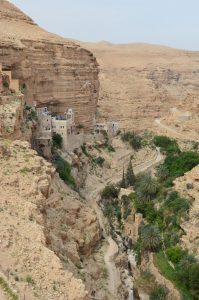
Jericho’s population of 17,000 work in local businesses and agriculture, and particularly in the refugee camp of Aqabat el-Jar to the south of the city. The tropical vegetation offers what might be the best citrus and bananas in the world.
Hisham’s Palace

Mount of Temptation

St. George’s Monastery

